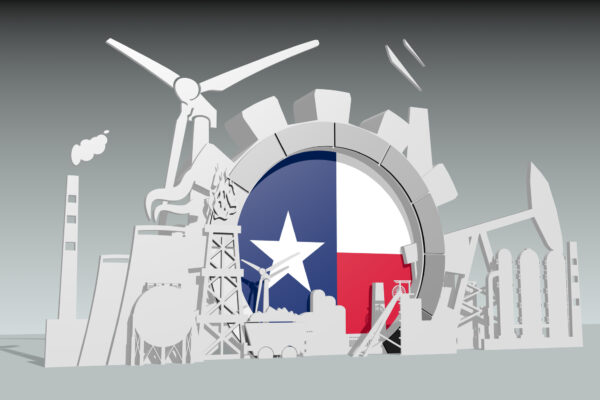AUSTIN, Texas — Texas could eliminate its carbon pollution in fewer than 30 years, and decarbonizing would actually strengthen the state’s economy, according to new research from energy scientists at The University of Texas at Austin.
The report warns that global markets are already casting a wary eye on goods and services that rely on fossil fuels. Those shifting consumer preferences could mean trouble for Texas, which built an economy larger than those of most countries on the strength of its oil and natural gas industries. Texas risks losing its economic footing unless it embraces new approaches to energy production, the report says.
“The market is already demanding that we move in a different way than we have been,” said Isabella Gee, a postdoctoral fellow in the Cockrell School of Engineering and lead author of the report.
But Texas, despite its reputation for big rigs and black gold, is also an emerging clean-energy hub, with breathtaking solar and wind potential. The state is well positioned to decarbonize, according to the report, titled “Don’t Mess with Texas: Getting the Lone Star State to Net-Zero by 2050.” The researchers studied four approaches to reaching net-zero emissions. To their surprise, all four approaches produced greater economic output than “business as usual” — the state’s annual gross domestic product was anywhere from 1.6% to 7.9% higher.
Decarbonization would not require eliminating Texas’ fossil-fuel industries, either. In one approach examined in the report, Texas would continue along business-as-usual conditions, continuing to rely heavily on oil and natural gas, but it would supplement it by building facilities that suck carbon dioxide right out the air, like a vacuum. These systems are still new but gaining interest — there are now 19 such facilities operating around the world, with another under construction in the Permian Basin. The UT researchers also looked into the possibility of a massive shift to hydrogen fuels. In that scenario, the Texas hydrocarbon industry essentially “becomes the hydrogen-and-carbon industry,” thereby saving jobs while creating new ones, said Michael Webber, a professor of energy resources in the Walker Department of Mechanical Engineering and co-author of the report.
“This doesn’t have to mean the decimation of the oil and gas industries,” Webber said. For example, the team’s analysis finds that keeping some natural gas in the power sector’s fuel mix provides valuable dispatchability when other resources are not available.
The researchers arrived at their projections using three computer models: one that forecasts electric demand, another that figures the cheapest carbon-neutral way to meet that demand, and a third that uses such data to make regional economic forecasts. They stress that no particular approach is best — each has benefits and drawbacks — but that Texas has a variety of options from which to choose.
Accompanying the report is a new online tool, the Texas Energy Policy Simulator (TX-EPS), with which anyone can test their ideas about decarbonizing the state. TX-EPS was developed by climate/energy think tank Energy Innovation.
The report is bullish on Texas’ carbon-cutting potential in part because of the state’s entrepreneurial spirit, the researchers said. When Texans do something, they can do it bigger than just about anyone — a spirit best exemplified by the side-by-side booms of natural gas, production of which quintupled in the Permian Basin during the past decade, and solar power, which doubled between 2019 and 2020 and nearly did again the following year.
“The thing Texas does is deploy at scale. That’s our superpower,” Webber said. “We can do things at a globally relevant scale in a matter of decades or even years.”
The report was funded by the Cynthia and George Mitchell Foundation, the Energy Foundation, The Meadows Foundation and Catena Foundation. Authors are from UT Austin, Colorado-based Vibrant Clean Energy and the University of Colorado, Boulder. For additional materials, visit cockrell.utexas.edu/tx-net-zero-2050.




